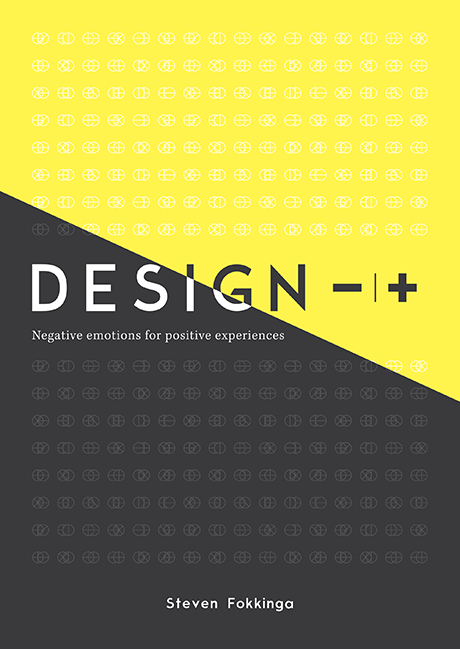PhD-project: Design -|+ Negative emotions for positive experiences
2010 – 2015
Supervisory team: Prof. Pieter Desmet and Prof. Paul Hekkert
Contact: Steven Fokkinga | s.f.fokkinga[at]tudelft.nl
Summary of the thesis
Experience-driven design considers all aspects of a product – its appearance, cultural meaning, functionality, interaction, usability, technology, and indirect consequences of use – with the aim to optimize and orchestrate all these aspects and create the best possible user experience. Since the late 1990s, designers and design researchers have begun to explicitly investigate how products elicit emotions in users, and how knowledge of specific emotions like joy, pride, frustration or sadness could help designers to improve the user experience of products. Generally speaking, it seems that the most evident aim for a designer is to maximize the amount of positive user emotions and to minimize the amount of negative user emotions – based on the assumption that positive emotions are always desirable and negative emotions are always undesirable.
However, if we look at some examples of enjoyable and meaningful human experiences, we quickly realize that this assumption is not always valid. Several examples of art and entertainment demonstrate this: People who ride rollercoasters, play challenging video games, or listen to downbeat music are experiencing fear, frustration, and sadness, respectively, but are also enjoying themselves. Furthermore, they do not seem to enjoy these activities despite these emotions, but because of them: unintimidating rollercoasters, effortless games and unmoving music are not nearly as satisfying. In my PhD-project I have focused on such experiences – named ‘rich experiences’ – and investigated how these can be systematically designed into consumer products and services.
The first four chapters lay the theoretical foundation of this investigation. In the first chapter I explore some assumptions about emotions and when they are considered positive or negative. In chapter two I describe a phenomenological study that examined what kind of life situations evoke mixed emotions, and in which cases those emotions constitute rich experiences. Chapter three discusses the possible reasons why people seek out negative emotions and the condition under which these emotions can be enjoyed. The insights lead to a framework of the formation of rich experiences, which is used to analyze six product examples. Lastly, chapter four discusses a series of studies that lead to the creation of a textual and audiovisual database that offers designers knowledge about a highly differentiated set of negative emotions to help them create unique rich experiences.
The last five chapters subsequently discuss how designers could evoke this kind of experiences through products and services. Chapter five introduces a methodical design approach to emotionally enrich user experiences. In addition to the overall approach, it also discusses ten ‘rich experience qualities’ that designers could use right away in their projects. Six design concepts generated with the approach are discussed. Chapter six further examines the design approach, by reflecting on the results and processes of nearly sixty design students and a professional designer. The chapter discusses the rich experience qualities and the design concepts that the designers generated using the approach. Chapter seven describes a larger case study: the design and testing of an interactive wristband that aimed to add engagement to the activity of running by evoking fear in users. Chapter eight slightly extends the scope of the thesis. Whereas the preceding chapters focused primarily on adding enjoyment, engagement and meaning to generally boring or empty situations, chapter eight investigates whether a similar approach can be used to design for user situations that already involve a strong negative emotion. The final chapter reviews the findings of the thesis, discusses ethical implications, and contemplates some possibilities for future research.
For more detailed information, please take a look at my publications




